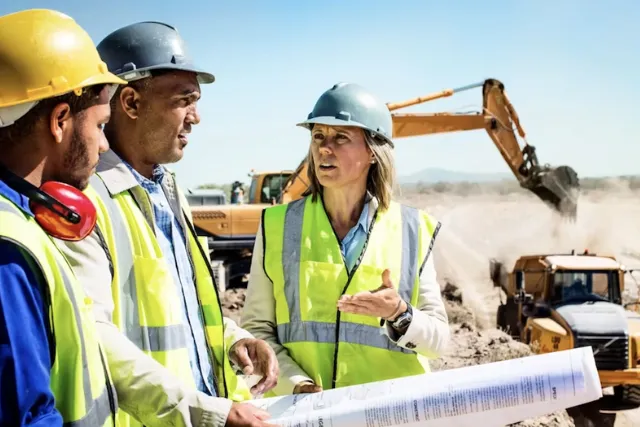
Despite higher material costs, tariff concerns, and ongoing market uncertainty, many U.S. contractors report their workloads remain strong — and in some cases, are growing — heading into 2025.
Industry surveys and interviews reveal a construction market that is still producing steady opportunities, fueled by infrastructure spending and robust backlogs, even as some sectors slow due to high interest rates and price volatility.

A recent Equipment World reader poll found that many contractors forecasting revenue growth in 2025 credited the increase to larger workloads, stronger infrastructure investments, and more experienced crews. Some respondents also pointed to what they perceive as positive impacts from President Donald Trump’s policies.
Mike Engstrom, owner of Engstrom Excavating in Scandia, Minnesota, expects his 2025 revenue to rise 6–10% year-over-year, citing a strong public-sector backlog as the main driver. However, he notes that housing projects in his area have slowed.
One New York contractor, who preferred not to be identified, predicts his 2025 revenue will fall 6–10% compared to 2024, blaming rising material costs — especially gravel and lumber. While he supports the overall direction of federal policy changes, he acknowledges results take time.
“You can't flip a light switch and [have] things change immediately,” he said.
Derek Rachel, project manager at Rachel Contracting in Maple Lake, Minnesota, forecasts similar revenue levels to last year. He attributes this stability to strong public-works spending, even as commercial construction slows under the weight of high interest rates.
Rachel says tariffs have had a clear impact on public projects.
“I know a couple public works, the public jobs, they have a tariff clause in there asking more or less how much this [tariffs] is going to affect you,” Rachel said. “And they are asking almost for the dollar amount or percentage of how much it's going to affect it moving forward.”
National construction indicators suggest a market that is holding up, albeit under pressure from inflation and trade policy uncertainty:

The Associated Builders and Contractors’ Construction Backlog Indicator rose to 8.7 months in June, up 0.3 months year-over-year. Infrastructure work leads the way at 9.3 months, followed by commercial/institutional (8.9 months) and heavy industrial (6.8 months).
According to the Associated General Contractors’ producer price index, costs for materials and services in nonresidential construction were up 0.2% in June compared to May, and 2.3% year-over-year.
“Rising construction costs and economic uncertainty are already causing some owners to put projects on hold, which will only get worse if costs jump again,” said Ken Simonson, AGC’s chief economist.
The Dodge Construction Network reported nonresidential building starts rose 39% month-over-month in June, with year-to-date nonresidential starts up 6%. Total construction starts jumped 16%.
The Dodge Momentum Index hit 280.4 in July, up 21% from June. Commercial planning rose 14.2%, institutional planning 35.1%, with notable gains in data centers and warehouses.
While the current workload pipeline is solid, analysts caution that conditions could shift later in the year.
“Construction starts saw solid growth in June, alongside particular strength in manufacturing and data center construction,” said Sarah Martin, associate director of forecasting at Dodge Construction Network. “However, risks remain elevated that construction starts will be more subdued in the back half of the year – alongside ongoing uncertainty over trade policy and the broader economy.”
The combination of infrastructure-driven demand, backlog strength, and select sector growth has helped many contractors remain optimistic. Still, rising costs, labor shortages, and tariff impacts continue to temper expectations for 2025.
Originally reported by Ben Thorpe in Equipment World.